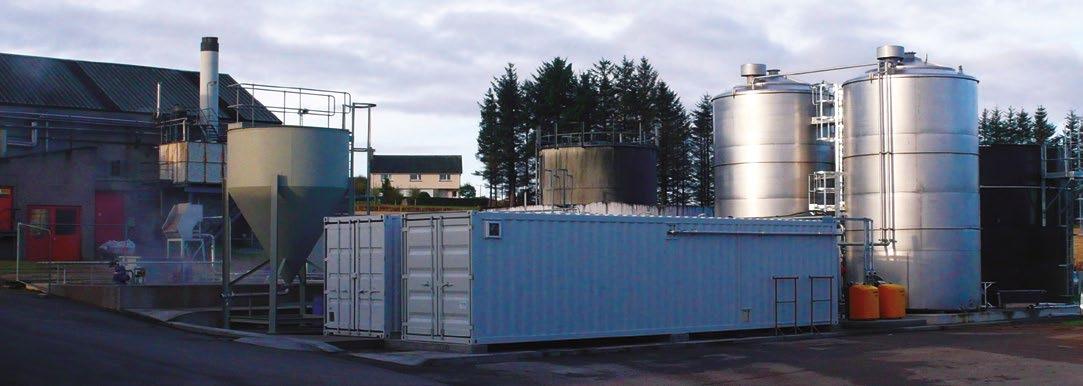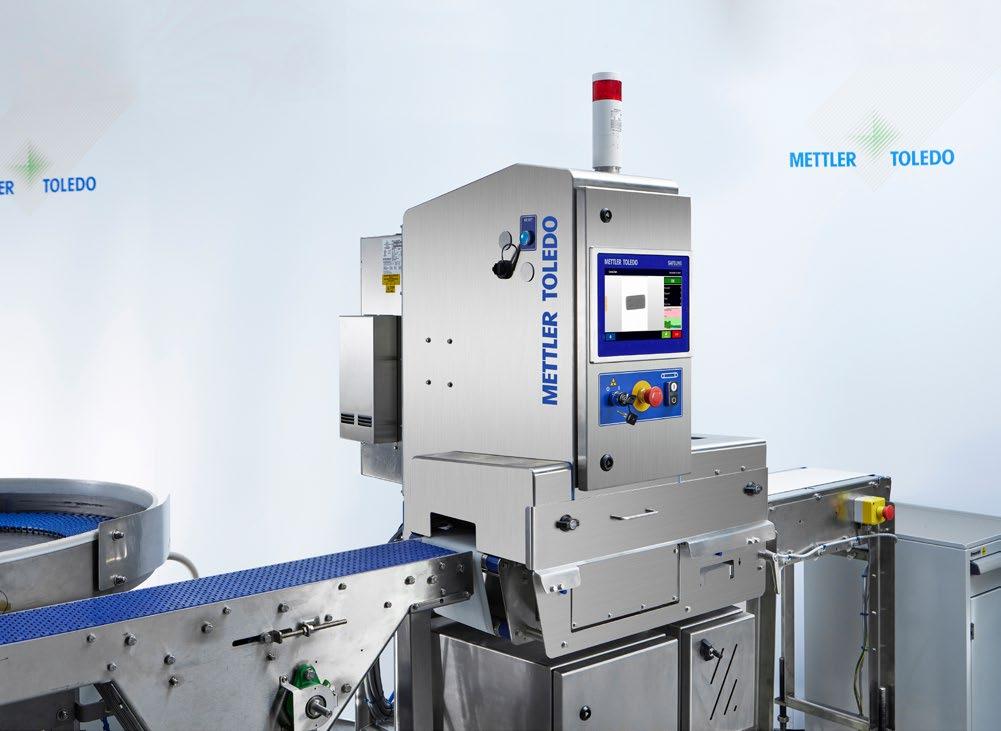
5 minute read
METTLER-TOLEDO
Compact, High-Speed and Precise: Mettler-Toledo’s new x-ray inspection system for small, single-pack products
The X34C delivers a unique x-ray solution to the market: cost-effective inspection of individual packs and bars, immediately after flow-wrapping or pack sealing
Mettler-Toledo Product Inspectiontoday launches a new x-ray inspection system, the X34C, that is designed specifically for the detection of contaminants in small, individual packaged products at highspeed.
The X34C x-ray inspection system is based on three key design principles of compactness, high-speed and precision:
Compact Footprint: the system has a footprint of just 700mm in length, which includes an integrated reject. This means that the X34C can be installed into production lines where space is at a premium.
High-Speed Capabilities: the X34C can operate at 120 metres per minute, making it possible for the first time to keep product inspection aligned with many high-speed flow-wrapping machines and pack sealers used in the confectionery sector for packing individual products. This combination of speed and compact footprint is currently unique in the market.
Precise Performance: the optimised focal distance of the 0.4mm diode detector and 100W Optimum Power Generator maximises the probability of detecting small contaminants and helps to reduce the False Reject Rate. Because the power and contrast levels of these components are automatically optimised for each application, the system does not always need to run at its full 100W output, delivering power savings.
“We are expecting that manufacturers of small confectionery products and snacks will love the high-speed inspection that the compact X34C gives them, as improved detection sensitivity allows the technology to inspect and reject single bars at fast speeds straight after they exit the flow-wrapper. This not only reduces waste, because a single bar rather than the entire multi-pack can be rejected, but it also enables the manufacturer to maintain high levels of productivity at this critical point of the production line,” said Mike Pipe, Head of Global Sales & Product Management, Mettler-Toledo Product Inspection.
“For manufacturers, who are typically hard-pushed to fit new equipment into existing lines, the small footprint of the X34C means they can benefit from outstanding levels of contaminant detection and productivity without too much disruption to their operation. Plus companies can feel confident that their brands are protected due to the X34C simultaneously completing comprehensive product and packaging quality checks.” The X34C shares many of the same features and advantages as other models in the Mettler-Toledo Safeline range of x-ray systems. These include the easy-to-use operating software, including ContamPlus™, that both the standard X34 and X36 systems use, with automated product set-up reducing the need for operator training, while increasing production up-time and product safety. These aspects serve to reduce the Total Cost of Ownership.
In addition, the X34C can be connected to Mettler-Toledo Product Inspection’s ProdX™ data management software, which supports supply chain digitalisation, compliance and traceability.
On the hardware side, the X34C can be configured to meet customer requirements, including with an airblast reject system to remove contaminated products at high speed. Maintenance functions are simplified through easy access to all parts of the system from the front. The x-ray system has been designed to operate in a range of working environments. It is rated at IP55 as standard for ingress protection, with IP65 also available for manufacturing environments which require a higher level of dust protection. Customers with cooler ambient factory temperatures (less than 30 degrees Celsius) can choose Active Cooling through a fan system, which can improve the environmental performance of the system.
In summary, the Mettler-Toledo Safeline X34C is a fast and effective vertical x-ray inspection system, optimised for contaminant detection of individual products within a defined application set: flow-wrapped confectionery, snack and cereal bars and small bakery packets. Manufacturers producing these products will benefit from its speed, enhanced detection sensitivity and compact footprint, whether they are multinational organisations with multiple factories, or SME-sized operators with a single production line. In addition, they will enjoy the ease of use and proven robustness and reliability that MettlerToledo Safeline X-ray systems are already renowned for.
For more information, visit www.mt.com/xray-x34c
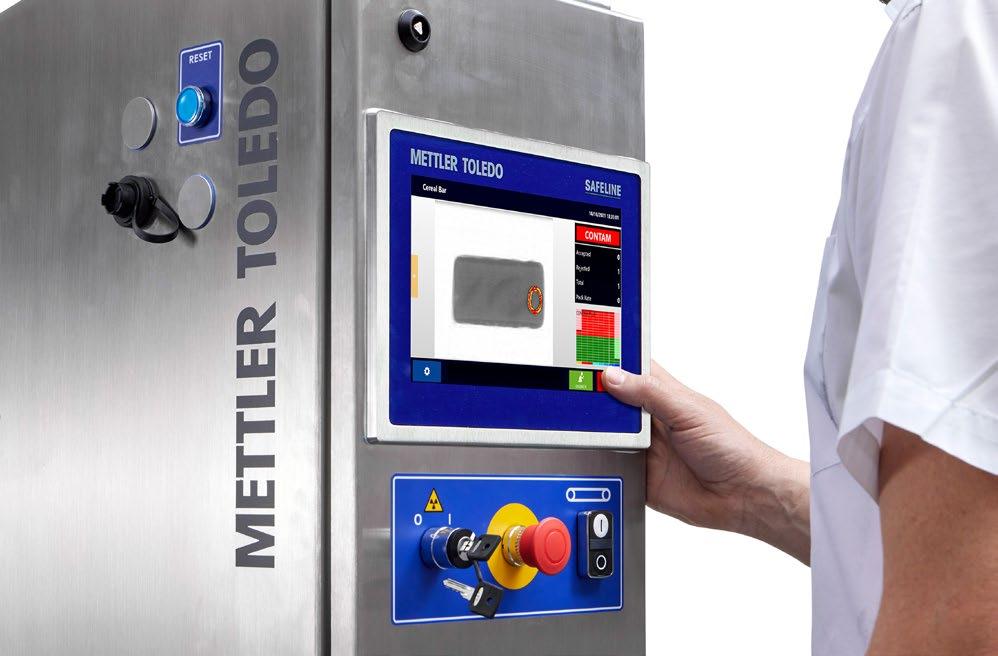
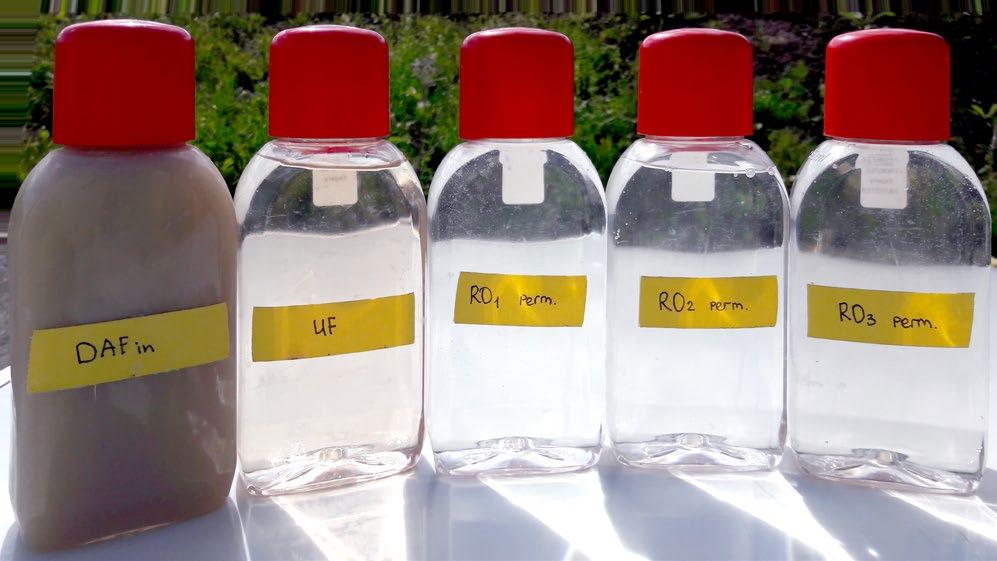
The value of water as a production factor
The availability of water for industrial production has been taken for granted for many years and in most countries. Climate change is putting an end to this. Even though water is still cheap compared to its value, it becomes precious as soon as production output is affected due to shortages.
The current situation: in many cases industrial effluents have to be treated before being discharged into the sewage system. Reusing water is often not economical for factories because the specific costs per cubic metre of treated wastewater is higher than for fresh water.
However, this calculation is not entirely correct for several reasons:
1. Industrial effluents must be treated in any case, so these costs already exist. For a cost comparison with fresh water, only the additional costs to achieve the required water quality should be considered, not the full treatment costs. To complete the picture, the risk of pro-duction losses due to water scarcity must also be taken into account.
2. The quality of fresh water is often higher than what is really needed in production. Many production processes do not require potable water. It is also a waste to use potable water for sanitary purposes. Therefore, it may not even be necessary for a water recycling process to achieve potable water quality.
more economical to treat only single side streams. The treated effluent from one production line may be sufficient for another process or at least for cleaning trucks or for sanitation. This reduces the invest-ment costs for effluent treatment as well as the operation costs because the hydraulic load is reduced.
4. Another side effect may be material recovery from treatment residues or concentrates. This may reduce material purchasing costs or become another source of income.
5. Industrial effluent treatment and utilisation can be done with compact, customised side stream plants that offer all flexibility production lines and effluent characteristics demand for. Ideally, these plants are modular and can easily be extended as the production grows.
IndustrialEffluentTreatment&Utilisation
LightAttheEndofTheMembrane

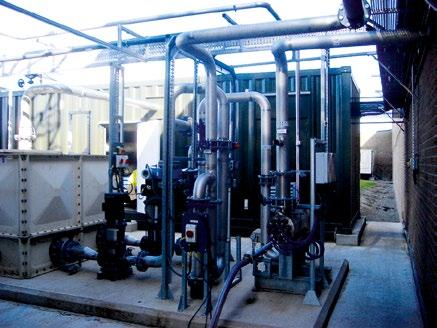
Thetryingtimesoverthelastfewyears,have provedchallengingtothefoodanddrinkssectors forthecontinuedoperationoftheirmanufacturing andproductionfacilities.Witheverincreased lockdownsontravel,WEHRLEhavebeenableto provideremotesupporttotheirexistingandnew clients,aswellasdevelopenhancedsupport packagesusingaugmentedvirtualreality.Thisnew systemhasbeenusedtoprovideday-to-day processstabilitysupport,aswellasprovide technicalsupervisionfortheinstallationand commissioningofnewfacilitiesacrosstheother sideoftheglobe. Wehavecontinuedtohelpourclientsmeetand improve on their sustainability goals, using tailoredinhousetechnologies,forthegeneration ofrenewableenergyandrecycledwaterand WEHRLEcontinuestoprovide,localengineering supportthroughitsglobalengineeringnetwork.
WEHRLEarea160-year-oldfamilyrunbusiness, locatedinSouthwestGermany.ItsUKdivisionis basedinBloxham,Oxfordshireandhasbeen operatingforover20years. Shouldyourequirefurtherinformationplease contact: info@wehrle.co.uk orvisitourwebsite.
